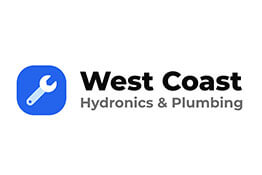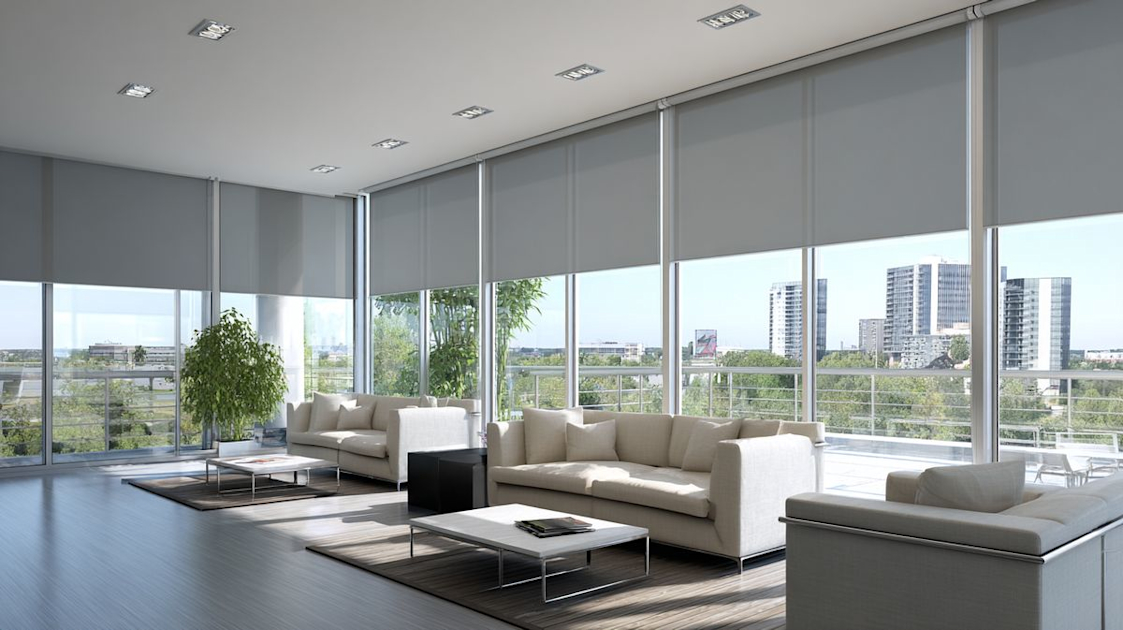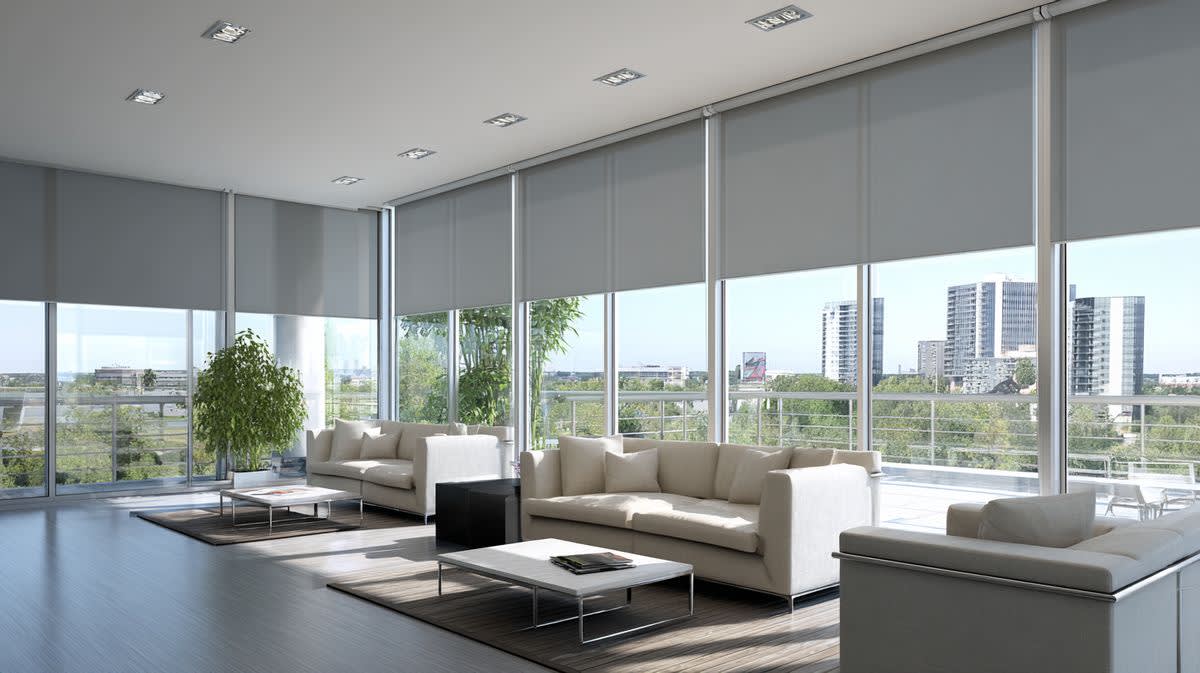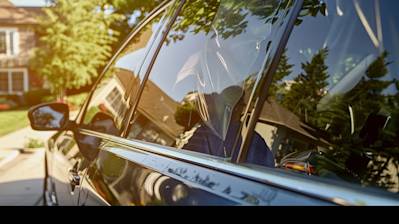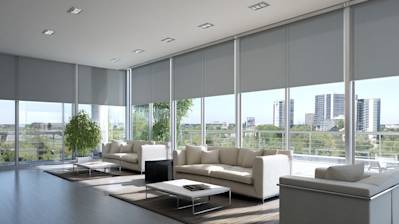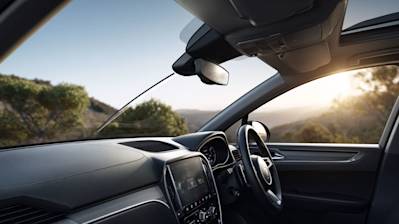In today's modern architectural spaces, privacy and design are no longer mutually exclusive. As open-concept designs and large glass facades become more prevalent, the demand for innovative solutions to maintain privacy without compromising aesthetics has spurred the rise of opaque film windows. These are not just any traditional windows, but a revolution in how we perceive and interact with our interior spaces.
What Are Opaque Film Windows?
To put it simply, opaque film windows are glass installations treated with or covered by special films that reduce transparency. The films used vary greatly in their opacity levels, allowing for customized control over light and visibility. Unlike frosted glass that provides a permanent solution, opaque films offer flexibility and are often removable, making them an appealing choice for renters and homeowners alike.
The Technology Behind Opaque Films
At the heart of opaque films is advanced polymer technology. These films consist of multiple layers that include a base layer, adhesive, and a final protective coating. The base layer often contains micro-embossed patterns that scatter light in multiple directions, reducing clarity and creating the desired level of opacity.
Some advanced films incorporate liquid crystal technology, which allows them to switch between transparent and opaque states with the flick of a switch. These "smart films" operate via voltage changes, giving users the flexibility to adjust their privacy settings dynamically.
Benefits of Opaque Film Windows
Just why are people gravitating towards opaque window films? The benefits are numerous and versatile, making them suitable for both residential and commercial applications.
Enhanced Privacy
The primary allure of opaque film windows is their ability to provide privacy. Whether for bathroom windows, office meeting rooms, or urban homes closely surrounded by neighbors, these films make spaces feel more secure and intimate without shutting out natural light completely.
Energy Efficiency
Opaque films can also contribute to energy savings. By filtering UV rays and reducing glare, they help maintain a more consistent indoor temperature. This can reduce reliance on air conditioning during hot months and heating during cooler ones, ultimately cutting down on energy bills.
Aesthetic Versatility
From matte finishes to decorative patterns and even reflective surfaces, opaque films offer a wide range of stylistic options. They can complement a minimalist, modern space or add texture and visual interest to an otherwise bland windowpane. These films can be customized to match branding themes or simply to create a unique interior design statement.
Cost-Effectiveness
In comparison to replacing glass installations with etched or frosted panels, applying a film is incredibly cost-effective. For those on a budget, it's a way to update the look and function of windows without a major renovation.
Applications of Opaque Film Windows
Opaque film windows are common in a variety of settings. Here's how they're being utilized across different sectors:
Residential Spaces
In homes, these films are a boon for bedrooms and bathrooms, offering needed privacy while still allowing sunlight to stream in gently. They're particularly useful in urban settings where space is tight and windows are often directly across from one another.
Office Environments
Modern offices favor transparency and open environments, but privacy is still necessary for meetings and quiet workspaces. Opaque films provide a solution, allowing quick transformation of glass-walled conference rooms into private spaces. Additionally, they can be used to reduce glare on computer screens, improving comfort and productivity.
Hospitality Industry
Hotels and restaurants have adopted opaque films to create ambiance and privacy. Window films in hotel rooms allow guests to enjoy outdoor views when desired, while maintaining privacy when needed. Similarly, restaurants use them to enhance dining experiences, making diners feel ensconced and comfortable.
Healthcare Facilities
Privacy is paramount in healthcare settings. Opaque window films provide a way to ensure patient confidentiality, especially in rooms that face busy corridors or streets. They can also help reduce glare and harsh lighting in recovery rooms, making them more comfortable for patients.
Installation and Maintenance of Opaque Film Windows
One of the great advantages of opaque film windows is the simplicity of their installation and maintenance.
Installation Process
The installation typically involves cleaning the glass thoroughly to remove any dust or grease, applying a soapy water solution, and then smoothing the film onto the glass. This process can often be done without professional assistance, although hiring a professional ensures a bubble-free application, especially for large panes or intricate designs.
Maintenance Tips
Once installed, opaque films are low maintenance. They can be cleaned with a gentle cleanser and a soft cloth—abrasive materials should be avoided to prevent scratching the film. Over time, films may become worn or damaged, especially if subjected to harsh elements. Luckily, they can be removed or replaced with minimal fuss compared to permanent glass treatments.
Innovations and Future Trends in Opaque Films
As technology evolves, so too does the potential for opaque films. New advancements are continuously pushing the envelope of what these films can achieve.
Smart Film Technology
Smart films that integrate with home automation systems are among the most exciting developments. Imagine controlling your window opacities from a smartphone app or voice command. This integration allows homeowners and businesses alike to optimize natural light usage and privacy with ease.
Eco-Friendly Innovations
Sustainability is a growing concern in the architectural world. As such, newer film models are being developed with eco-friendly materials and manufacturing processes in mind, minimizing the environmental impact while maintaining high performance.
Aesthetic Variabilities
Manufacturers are experimenting with a broader range of dyes and patterns, making films that not only provide privacy but also transform spaces with vibrant colors and dynamic visuals when light hits them.
Considerations When Choosing Opaque Films
When selecting an opaque film for your windows, there are a few key considerations to keep in mind:
Purpose and Functionality
Determine whether you're prioritizing privacy, energy efficiency, or aesthetics. Different films offer varying features, and deciding on your primary goal will guide your choice.
Quality and Durability
The market offers a range of products, and quality can vary significantly. Investing in a higher-end film often pays off in the long run, as these tend to offer better performance and longer lifespan.
Expert Installation
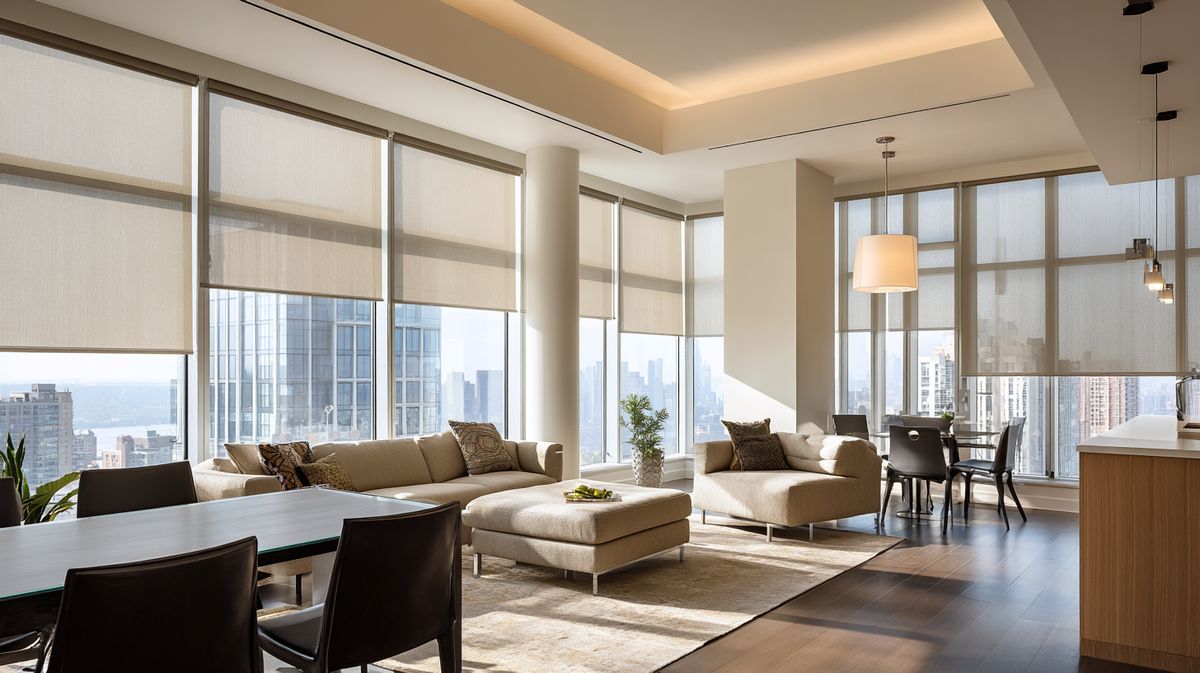
Frequently Asked Questions about Opaque Film Windows
Are opaque films suitable for all types of windows?
While opaque film for windows can be applied to a wide variety of glass surfaces, there are some considerations to keep in mind. They are ideal for standard residential and commercial windows as well as glass doors. However, if you have textured or frosted glass, the adherence and finish of the film might not be optimal. Always check with manufacturers or installation professionals to ensure compatibility with your specific glass type.
How do I install opaque window films?
Installing opaque window films can be a DIY project if you feel handy, or you can hire professionals for a seamless application. If you decide to do it yourself, start by cleaning the window thoroughly to remove any dust or residue. Cut the film to size, peel off the backing, and apply it to the glass using a squeegee to remove air bubbles and ensure a smooth finish. Ensure you follow any specific instructions from the film manufacturer for the best results.
Can opaque films be removed or replaced easily?
Yes, one of the benefits of opaque window film is that it can be removed and replaced without damaging the glass. To remove the film, heat it slightly with a hairdryer to loosen the adhesive, and then peel it off slowly. Clean the window surface afterward to remove any leftover adhesive residue. If you’re planning to install a new film, make sure the surface is thoroughly clean and dry before application.
How effective are opaque films for energy efficiency?
Opaque window films can significantly enhance energy efficiency by reducing heat transfer. In the summer, they reflect sunlight and prevent heat build-up, keeping interiors cooler and reducing reliance on air conditioning. In winter, they provide an extra layer of insulation, helping to retain heat indoors. While they won't replace the need for proper insulation, they do contribute to a reduction in energy costs associated with heating and cooling.
Do opaque windows films block UV rays?
Yes, many opaque window films are designed to block up to 99% of harmful UV rays. This protects your interiors from fading and damage, particularly items like furniture, flooring, and artwork that are sensitive to sunlight. Reducing UV exposure can also protect the skin when spending extended periods near windows.
Are there different types of opaque window films available?
Indeed, the market offers a variety of opaque window films with different levels of opacity, patterns, and finishes. Some films offer complete blackout, while others allow for some light filtering. You can also find decorative films that add aesthetic appeal to the functional benefits. It's important to choose a film that aligns with your needs for privacy, light control, and interior design preferences.
How do I maintain and clean opaque film windows?
Maintenance for opaque film windows is relatively straightforward. Clean them with a soft cloth and mild, non-abrasive cleaner to prevent scratching or damaging the film. Avoid using high-pressure water sprays or sharp cleaning tools, which could peel or damage the film. Routine cleaning ensures your window film looks great and functions effectively over time.
Can I apply opaque films on car windows?
Yes, you can apply opaque window films on car windows, but there are legal restrictions regarding the level of opacity permitted for automotive use, known as window tinting laws. These laws vary by region, so you should check local regulations before applying an opaque film to your vehicle’s windows.
Do opaque window films come with warranties?
Many manufacturers offer warranties for opaque window films, covering issues like bubbling, peeling, or discoloration. Warranty terms can vary significantly between companies, so it’s a good idea to compare these when selecting your window film. Reading the warranty terms before purchasing can save you from unexpected hassles down the line.
Are opaque films eco-friendly?
Opaque films are generally considered eco-friendly as they contribute to energy savings and reduce reliance on artificial climate control systems. Additionally, some films are made with sustainable materials and low-VOC adhesives, minimizing environmental impact. If eco-friendliness is a priority, look for films certified by recognized environmental standards.
Can they enhance security?
While primarily used for privacy, certain opaque window films can enhance security by reinforcing the glass. They won’t make your windows shatter-proof, but they can reduce the risk of breakage by holding shattered glass together, providing extra time to handle potential threats or emergencies.
How long do opaque films last?
The lifespan of opaque window films varies based on their quality, exposure to sunlight, and how well they're maintained. High-quality films, properly installed and well-maintained, can last up to 10-15 years. Always check the product specifications and warranty to get an idea of the expected lifespan.
Will the film affect wireless signals or electronics?
Generally, opaque window films do not interfere with wireless signals or electronics. However, if the film includes certain metallic components, there might be minor interference with radio, WIFI, or cellular signals. Non-metallic films are available if this is a concern, ensuring seamless integration with your smart home or office technology.
Are opaque films suitable for rental properties?

Pros of Opaque Film Windows
Privacy
Enhanced Privacy
Opaque film windows are a top choice for anyone looking to enhance privacy. Unlike clear windows, they effectively block outsiders from peering into your space. Whether it's a home or office, having that layer of opacity means you can go about your daily activities without worrying about being observed by passersby or neighbors.
Ideal for Bathrooms
In areas like bathrooms, having privacy is essential, so opaque films are especially beneficial. They provide that necessary barrier without the need for heavy curtains or blinds, which can sometimes get cumbersome or moldy in humid environments.
Light Filtering
Balanced Lighting
While opaque films block visibility, they still allow a fair amount of light to pass through. This means you can still enjoy natural light without harsh glares or the need for artificial lighting during the day. The diffused light can create a soft, ambient atmosphere that's easy on the eyes.
UV Protection
Many opaque films also offer UV protection, which can help protect your furnishings and decor from fading due to sunlight exposure. This makes them a practical option for rooms with valuable or delicate interiors that you'd like to preserve.
Energy Efficiency
Insulation Benefits
Opaque film windows can improve a building’s insulation by reducing the amount of heat loss during the colder months and minimizing heat gain in the summer. By regulating indoor temperatures, they can contribute to lower energy costs for heating and cooling.
Aesthetic Options
Variety of Designs
Opaque films come in various designs and patterns, allowing you to customize the look of your windows without committing to permanent changes like frosted glass. Whether you prefer a matte finish or a decorative pattern, there’s likely an option that suits your style.
Easy Application
Applying opaque film is straightforward and much less invasive than installing new windows or changing window structures. You can easily update or remove the film if you want a change, making it a flexible design choice.
Cons of Opaque Film Windows
Limited Visibility
No Outside View
One of the primary drawbacks is that opaque films completely block your view to the outside. If you enjoy a view of your garden, street, or skyline, switching to opaque film might mean sacrificing that connection to the outdoors, which can be a significant downside for some.
Reduced Security Visibility
In areas where being able to see who is approaching your property is important for security reasons, opaque films can be a disadvantage. They prevent you from easily checking outside from your window, potentially reducing your sense of security.
Aesthetic Limitations
Uniform Appearance
While there are many designs available, opaque films provide a uniform look that some might find limiting compared to the dynamic views offered by clear glass. If your decor often relies on key visual features from your surroundings, this might be a notable compromise.
Not for Every Style
Depending on the design aesthetic you’re aiming for, opaque films might not always fit. For spaces that thrive on transparency and openness, like modern or minimalist designs, the use of opaque film can sometimes feel out of place.
Maintenance and Longevity
Potential for Bubble Formation
Improper installation can lead to bubbles or peeling around the edges, which can diminish the aesthetic appeal and effectiveness of the opaque film. Regular checks are essential to ensure the film remains in good condition.
Limited Lifespan
Over time, film might degrade or discolor due to exposure to the elements, potentially requiring replacement. Ensuring longevity might involve more frequent changes compared to other types of window treatments or films.
Cost Considerations
Initial Investment
While generally affordable, the initial purchase and installation can still be a factor for budget-sensitive projects. Depending on the size and number of windows, as well as the type of film chosen, costs can vary.
Replacement Costs
Because they may need to be replaced more often than some other window treatments, the long-term costs can add up. It’s essential to consider not just the initial price but the potential for recurring expenses.

Myths and Misconceptions About Opaque Film Windows
When it comes to upgrading or modifying windows, opaque film options can be a popular choice for their versatility and privacy-enhancing properties. However, there's a fair bit of confusion and misinformation surrounding these films. Let's clear up some of the myths and misconceptions so you can make an informed decision.
Myth: Opaque Window Films Make a Room Dark and Dreary
Misconception: All Opaque Films Block Out Natural Light Completely
Many people assume that an opaque film will entirely block natural light, making a room feel dark and claustrophobic. While it's true that opaque films are designed to prevent visibility, they don't always eliminate light. Various levels of opacity are available, allowing you to choose how much light you still want to filter through. Some films can diffuse natural light evenly, reducing glare without compromising brightness.
Reality: Options Exist for Light Control
The beauty of modern opaque window films lies in the wide range of options. You can select versions with varying degrees of light filtration. Some films incorporate advanced technology to let in the warmth and brightness of sunlight while maintaining privacy. This means you can enjoy a well-lit space without sacrificing personal space in terms of privacy.
Myth: Opaque Films Are Permanent and Damage Windows
Misconception: Once Applied, You're Stuck with Them Forever
One common fear is that once an opaque film is applied, it can't be removed or altered, locking you into a permanent decision. This just isn't the case. Most window films are designed for easy removal without causing damage to the glass. This makes them a flexible option for renters or those who like to switch up their decor frequently.
Reality: Temporary Solutions are Viable and Popular
Many opaque window films are specifically designed as temporary solutions. They can be peeled off without a trace, leaving the underlying glass pristine and ready for its next transformation iteration. Additionally, the removal process is usually straightforward, requiring little more than careful peeling and some mild cleaner.
Myth: Opaque Films Are Only for Bathrooms
Misconception: They're Unattractive in Living Spaces
It's easy to see why someone might think of opaque films as primarily for bathroom windows, where privacy is usually imperative. Some people worry that using them in living areas will make the space feel sterile or uninviting.
Reality: Aesthetic Versatility Adds Value
Contrary to this belief, opaque films can offer a stylish upgrade for any room. With an array of textures, patterns, and colors available, these films can enhance the overall decor theme and provide a modern aesthetic touch to traditional glass. Whether it’s a home office, nursery, or living room, opaque window films can bring a sense of sophistication and warmth.
Myth: Opaque Window Films Are Difficult to Maintain
Misconception: They Require Special Cleaning Agents and Techniques
There is a perception that once a window film is installed, maintaining its cleanliness and appearance is a hassle—demanding special cleaners or tools.
Reality: Simple Cleaning Methods Keep Them Looking Great
In truth, opaque window films are relatively low-maintenance. Cleaning them generally involves no more than a soft cloth and a mild window cleaner. There’s no need for harsh chemicals or rigorous cleaning methods. Talk about convenience!
Myth: Opaque Films Offer Limited Benefits Beyond Privacy
Misconception: Their Only Function Is to Provide Privacy
People mainly connect opaque films with privacy, often underestimating their broader benefits, which can lead to missed opportunities for improving household or office comfort.
Reality: Multifunctional Benefits Enhance Everyday Living
Beyond offering privacy, opaque films can help with temperature regulation by blocking some heat during summer while insulating windows in the winter—ultimately helping reduce energy bills. Additionally, they can protect your interiors from harmful UV rays, preventing fading on furniture and floors. Not to mention the safety benefits; they hold the glass together if it breaks, reducing the risk of injury.
Myth: Opaque Films Are Expensive and Not Budget-Friendly
Misconception: High Cost Deters Many Homeowners from Installing Them
Costliness is a common misconception, with many people assuming these films come with a hefty price tag that makes them unaffordable for average homeowners.
Reality: Diverse Price Points Cater to Various Budgets
Opaque films are available across a spectrum of price points suited for diverse budgets. From high-end, designer options to affordable DIY solutions, there's likely a choice to fit your financial plan without compromising on quality or effectiveness.
By understanding these myths and misconceptions surrounding opaque window films, you'll be better equipped to choose the right option for your needs. Whether it's for privacy, energy efficiency, or pure aesthetics, these films offer a wide range of benefits to enhance any living or working space.
Summary
Opaque film windows are a great option for anyone looking to increase privacy without completely sacrificing light. They're versatile and can be used in many settings—whether it's your home bathroom or an office conference room. You get to enjoy natural light while ensuring that sensitive areas stay out of sight. It's a win-win that can easily fit into various design aesthetics since there are so many styles available.
When it comes to energy efficiency, opaque film windows also lend a helping hand. They help in reducing glare and can keep your spaces cooler by blocking out some of the sun's more intense rays. This could lead to savings on electricity bills, as your air conditioning won't have to work as hard to maintain a comfortable temperature. It's a small investment with the potential for long-term savings.
Maintenance and application are relatively simple with opaque film windows, making them a practical choice for both renters and homeowners. No need to commit to expensive window replacements or permanent fixtures. Plus, if you decide to change things up down the line, removing the film is generally straightforward, leaving you with lots of flexibility to adapt as your needs change.
About A+ Window Tinting
Welcome to A+ Window Tinting, Roseville's go-to spot for top-notch window tinting services! With years of experience under our belts, we pride ourselves on delivering unparalleled quality and exceptional customer service to the vibrant community of Roseville, CA. Whether you're looking to enhance privacy, reduce glare, or protect your interiors from harmful UV rays, our team of skilled technicians has got you covered. Our commitment to using high-quality materials and staying updated with the latest industry trends ensures that you receive only the best results. Swing by our shop and let us transform your windows into something spectacular!
